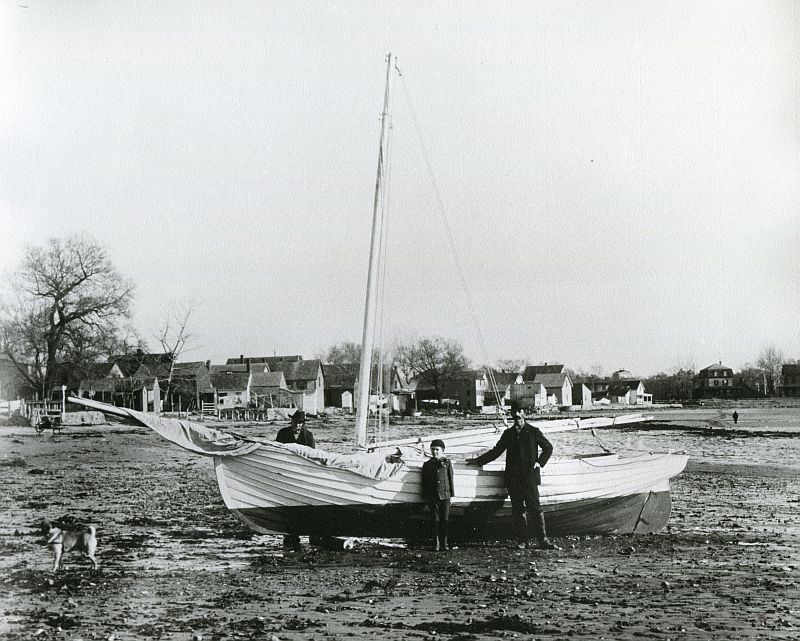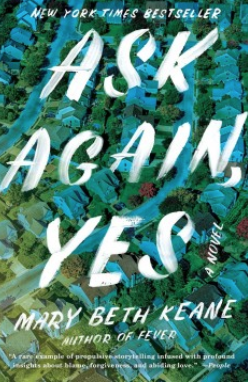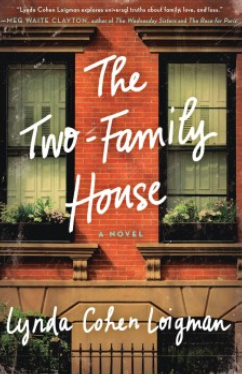Susan: Hello! Thank you for joining us today on the Librarians by the Sea podcast. I’m Susan Conner, and I’m the Assistant Director of the Swampscott Public Library. Today we’re going to discuss another highlight in Swampscott history, the summer estates. I’m very happy to have with me today Mary Cassidy, whom you’ll remember from our last podcast, the New Ocean House. Mary is the past president of the Swampscott Historical Society, she served on the Swampscott Historical Commission for many years, she was chairperson of the Train Depot Exterior Restoration Committee, and she was active with the recent restoration of Andrews Chapel. Thank you for coming and joining me today, Mary.
Mary: I’m very happy to be here.
Susan: Alright, let’s start today with what led you to research this time in Swampscott’s history. What interested you?
Mary: Well, several years ago I read a book called The Era of the Summer Estates: Swampscott, Massachusetts, 1870-1940, and it was written by Dorothy Anderson. And I became fascinated with the topic. Dorothy was a yearlong resident – a lifelong resident – of Swampscott, and interestingly enough, because she lived on the estates herself, her information is very firsthand. She gave the publishing rights for this book to the Swampscott Historical Society. So the first printing sold out, and there’s been a second printing, so the Historical Society is selling this particular book; but I know you have this book in the library, Susan.
Susan: We do.
Mary: So it’s a valuable piece of information. Let me tell you a little bit about Dorothy herself. She was born on December 8, 1908, and her father, Nils Anderson, was first-generation from Denmark, and he secured a position as estate manager and chauffeur for Elisha Cobb, whose estate, Wavecrest, was on Northstone Road – and interestingly enough, it is still there on Northstone Road. He later worked for Andrew Preston at his estate, called The Arches. And Dorothy’s mother was from Sweden, and she worked as a lady’s maid in these estates. So they were given housing on the estates in Swampscott during the summer, and they were given an apartment in Boston when their employers returned to the city for the winter. She attended Swampscott schools and attended Boston schools during the winter. She got her master’s degree from Boston University and taught English at Belmont High. She was very active in the town as a town meeting member, but most importantly, in 1985, she published The Era of Summer Estates in Swampscott, and the Swampscott Historical Society is very privileged to be the recipient of the original typed and hand-edited document of this book. She died in Swampscott at 89, but her knowledge of life on the estates in this town was firsthand. Because she was a young girl, she played with the Cobb children in and around the house and played with their friends on other estates, and then she would accompany her father, the chauffeur, when he had to pick up or deliver materials to these houses, so she was very familiar with the estates herself, but she also did extensive research into the background history of the estate owners and their homes, and without this book, this information about this colorful and and unique period in Swampscott’s history would be probably lost and forgotten, as this is the main source of this information. So we owe a great debt of gratitude to Dorothy Anderson.
Susan: It’s so nice to know that we have this information really firsthand, that she knew that.
Mary: Yes, it is.
Susan: Thank you. Where were some of these estates? Just in driving around, I think I see some really lovely houses, but where were these estates located?
Mary: Well, Susan, you wouldn’t see them, because most of them have been demolished and the estate areas, the acres, have been put into smaller lots where houses have been built. Dorothy primarily describes the estates which were located in the Phillips Beach area of the town. This included the points extending to the right of Puritan Road as we head towards Marblehead, and the other area that she describes is the Beach Bluff area, which is mainly Atlantic Avenue – and the homes were on the left side of Atlantic Avenue heading to Marblehead, very few of them on the right side, so those estates on the left had this large, long, expansive view of the marshes and the ocean.
But there also were a few in the center of the town, and one of the most famous ones was called Elmwood. As you know, we have an Elmwood Road right by our town hall. Well, this is where this summer home was built. It was built by Enoch Reddington Mudge, and in 1843 – so that’s, again, before the town was actually a town, and before, long before, the Civil War – he purchased 130 acres above King’s Beach. And he built a Gothic stone summer cottage – it was called a cottage – with tree-lined drives, and fountains, and magnificent gardens. And so this house was located right about where the lovely white Congregational church sits on Monument Avenue. After his death, his daughter deeded these acres to the Swampscott Land Trust, and they subdivided the property into lots designed by Frederick Law Olmsted, so this is now what we call our Olmsted area. But now homes in the Olmsted area, keep in mind, these were not summer estates; these were year-round homes, including Elihu Thomson’s home, so it isn’t really included when we talk about the era of the summer estates. But anyway, the first one was this Elmwood, right in the center of town.
There was another, called Beechley, and this is about where the gazebo is on the park, on the monument area, and this was built for Mr. Isaac W. Chick, and later he built one closer to the water for his son. So those two houses were called the Chick Estate, and they were there for many, many years. After the family stopped coming, they kept the buildings there, so many of us of an older generation remember seeing those two houses there before it became a park and a playground with the gazebo.
There also was another one behind Mission on the Bay or what we call Anthony’s Pier 4, there was a street that went down to that cliff, and there was a lovely one called Cliff House, and it was, again, right on the edge of the cliff, overlooking the water. So those were the three main summer estates in the center. The others were, definitely, as I said earlier, along Puritan Road, to the right, those cliffs that overlooked the Atlantic Ocean, and then along Atlantic Avenue itself.
Susan: Can you tell us who were some of the prominent families that lived on these? I know you mentioned Elihu Thomson; who were some of the people that lived on these estates?
Mary: Well, Dorothy divides them into two categories: the advantaged, and the self-made men. Most of those who built estates in Swampscott were from the Boston area, and the business that they were involved in encompassed banking and investments, insurance, leather manufacturers, wool and cotton merchants – well, just too many here to list. But I would like to tell you some of the businesses you’ll recognize. For example, the owner of the United Shoe Machinery Company – this is what we now call the Cummings Center in Beverly, that large, large building – the owner of the United Shoe Machinery Company lived in Swampscott. Also the founder of the Federal National Bank of Boston; PaineWebber and Company, a brokerage firm, the founder and owner of that lived in Swampscott; the owner of Gillette safety razor; the United Fruit Company. The United Fruit Company is an important one because before that time, people had to eat seasonal fruits and vegetables, but that company was the company that began to bring fruits and vegetables from South America and other parts of the country up to New England, so people could finally have strawberries in the fall, or bananas year-round, and so it was a very, very important company. And the owner of that company lived in Swampscott. The owner of Houghton Mifflin Publishing Company. And then there were many department store owners. Department stores, as you probably know, would be very, very new in this time and age. Before that there were individual stores – a dry goods merchant, etc. – but at the turn of the century, department stores came into vogue, and the owners of R. H. Stearns lived in Swampscott; Mr. White of White’s Department Store in Boston; the owner of Gilchrist’s, that was the Isemans; Jordan Marsh, the manager; William Filene’s son; John H. Pray, which was a very important furniture store at that time, the owner lived in Swampscott; the owner of Schrafft’s Candy; the owner of Stickney and Poor Spice; and of course, the co-founder of the General Electric. But all of these were very well-known and important, CEOs, we would call them these days, that lived here in Swampscott.
Susan: That is an impressive list of people who’ve lived here that – it’s been a great place to live for a long time! What can you tell us about some of these houses? I know I’ve seen pictures of a few –
Mary: I would love to. There are so many that I can only talk about a few. But if we take a walk, an imaginary walk, up along Puritan Road, the first right that we would come to would be Lincoln House Point, and this was named after the famous hotel, the Lincoln House, built in the 1860s. Many years later, in 1911, a beautiful stucco building with a bright red roof, called Greengate, was built on that point. And actually that building has been purchased, and it is now as we speak being developed into condominiums, but the lovely thing is that they did keep the exterior of the building. You used to be able to see, from Lynn as you came along the boulevard, or if you walked along Fisherman’s Beach, you could look over and see that house, which was just a magnificent view for us to see in Swampscott.
Walking along, we come to – Galloupes Point was important, because it was one of the first areas where summer homes were built. And there was a building called Strodehurst, which was purchased by – which was built by Charles Galloupe in 1864. And he called it a ‘cottage,’ but it had forty rooms, so I don’t think you would call that a cottage these days. And it was built on the edge of the cliff, with outstanding views of the Atlantic. Then his daughter married Dr. Mixter, and they had four sons and they built a home for each of their sons on Galloupes Point, so these all had beautiful views.
And then later, at the very tip of the point, a Dr. Lodge acquired John’s Field from one of the Phillips families, and he built a summer estate there. But this was at that time on Galloupes Point, and he wanted his own private road that went down to Puritan Road. And so he built a road and he edged it with these lovely, I they’re called, tupelo trees. They’re no longer there. And he called that, and it is now called still, Tupelo Road. So it was only one estate there, and it had this beautiful long, winding drive. But now there are many, many homes on Tupelo Road.
And then we come to the Gale Estate, and this one had quite a house. It was called Graystone Hall, and it was built in 1916 for Herbert E. Gale. He was a shoe manufacturer and later a banker. It was built on seventeen acres, which then encompassed what is now all of Gale Road. And the bottom half of the house was made completely of fieldstone. Italian stone bases were brought over from Italy to achieve the massive stonework for the lower portion of the house. Many of Swampscott’s citizens, whose ancestry is Italian, can trace their family back to these Italian craftsmen. There was a three-story barn housing cows and horses, a poultry house, a greenhouse, and a vegetable garden with a farmer’s cottage. There was a milkroom. This was a term which was used for a room which was built over a stream, and it kept not only milk, but other items, cold before they were brought up to the house – keep in mind, this is before refrigeration. Along with the beautiful mansion, there was a sport house for games and dances, a putting green, [and] a seven-car garage with a three-story chauffeur’s cottage attached. There were two apple orchards [and] cultivated raspberry and blackberry patches. The chauffeur’s cottage was an able cottage for his entire family to live. There was also a gatehouse to ensure privacy, and the lovely stone gate is still standing at the entrance of Gale Road. So I advise our listeners, and you, Susan, to drive down and look at that lovely stone gate at the entrance of Gale Road. It is recorded that there were eight maids, one butler, two chauffeurs, and eight gardeners employed there at a given time. So I call it Swampscott’s Downton Abbey.
Susan: Oh, absolutely!
Mary: Then we go along to Little’s Point, and this was an important part of our history, too. The first house was called Blythe’s Wood, and it was built in 1847 – keep in mind how early that was – by James L. Little. And then his son became a famous architect, his name was Arthur D. Little, and he built several other houses on the point. Shingleside was the name of one, Red Gables, another, The Orchards, another, Grasshead, another – all of these estates, by the way, had lovely names. Dorothy lists sixty-three estates in Swampscott, each with its own name at that time. But Arthur D. Little’s masterpiece was White Court, and this put him on the map, as they say. Many architectural digests and magazines praised him for this particular piece of architecture. Unfortunately, it has been demolished and condos are going to go into that area. But as you can see, this is why that point is called Little’s Point, because at one time the only houses there were built by Arthur D. Little. He actually started a famous style of architecture which was called shingleside, and it was recognized by wood shingles because they proved practical on the seacoast. And there were sloping roofs, and there were towers, and there were turrets. So when you look at a lot of these houses, you will recognize, by a little turret or a tower, or the uneven roofline, that this is what they call shingleside architecture.
So those are the main ones from the Puritan Road area, but then along Atlantic Avenue there was another, very famous one, and this is the one called The Arches, and it was built in 1904 by Andrew W. Preston – so we know that we had Preston Beach Hotel and we had Preston Beach, well, it was all named after this fellow who built The Arches. It was a magnificent estate. It was located on the left side of Atlantic Avenue heading toward Marblehead. So right about the middle of Atlantic Avenue all the way to Beach Bluff Road was where this estate was. Remember that there would be no houses to the right of the road, so there was a distant but spectacular view of the marshes and the beach. And Dorothy Anderson’s father did work for Mr. Preston at The Arches also, so she was very, very familiar with that beautiful building. And again, it was another Downton Abbey. I think there were thirteen people in service at that house. Many, many gardeners; beautiful. Actually, the Preston estate extended from Phillips Avenue to Beach Bluff Avenue. And there are now over 138 large homes on what was once just the property of one home, The Arches. So you can just imagine what that was like.
Susan: Impressive. Well, that is an amazing number of houses, and they sound fantastic. Can you tell us what some of the residents of these houses did while they were here in Swampscott? What did they do during their summers?
Mary: Well, actually I imagine it was quite a social time, but one of the important things was the railroad that came to Swampscott. This allowed the gentlemen a great convenience to go daily to their businesses in Boston. Before that they would not have been able to make a day trip there. But anyway, they could travel to their Boston offices in the morning and be back by five for cocktails on the veranda. And this railroad actually extended to Phillips Beach; there was a station on Phillips Beach; and to Beach Bluff; there was a station at Beach Bluff. And it’s interesting to note that the people – the men, or the families, who lived along that line paid for the dwellings, the depot buildings, when they were built. So, I think, just for their own convenience they had the railroad come down to Phillips Beach and Beach Bluff.
But I think gardening was a very important part of the life of the estate dwellers. I think because they lived, in the winter, in the city and had very little area in which to garden, when they came to their summer homes they went all out. Dorothy tells us that these ladies, the summer estate ladies, spent their money on gardening with enthusiasm and confidence. So, all of the houses had greenhouses, because they grew their plants from seeds. They couldn’t go to a nursery as we do and buy annuals or perennials and bushes, so they grew their flowers and plants from seed in their own greenhouses. And they had a main gardener, and then they had – that gardener probably had four or five men working under him all the time. So a group of these ladies, estate ladies, they met to organize the Swampscott Garden Club on June 24, 1924, and this has become the Garden Club of Swampscott, which is still operating today. And these women would get together and discuss their plants, the types of roses, or whatever that they – and they would exchange information on fertilization, etc. And then they also founded another club, called the Gardeners’ Club, and they had their head gardeners meet and exchange ideas. So they were very interested in their gardens, and the use of greenhouses to supplement their plantings was very common. But it was the expertise of the gardeners – these full-time, year-round career workers, who were responsible for the sumptuous grounds. Many were first-generation immigrants from Scandinavia, Ireland, and Italy, and in most cases they remained employed by the family for many, many years. They worked twelve months a year to beautify the grounds on these estates – and these estates, keep in mind, were inhabited for only three months of the year. So gardening was a very big hobby.
And then the other was horseback riding and horses. Most of the early summer estates, when they were planned, stables were included, always on separate lots. We have a few of the original stables and carriage houses still left in Swampscott. These stables usually provided comfortable living accommodations for the coachmen who drove and cared for the horses. If you can imagine it, Atlantic Avenue was at that time just a dirt road, and organized races would often take place. Horses and horse-drawn carriages would race from the beginning of the road, now where it branches off to Humphrey Street, to the Marblehead line. And participants for the races came from as far away as Beverly, Hamilton, and Wenham. So these estate dwellers were very happy to have thoroughbred horses, beautiful animals. They were very proud of them as they drove in their carriages around town. So, of course, later, when there were automobiles, the first automobiles in Swampscott were – these estate dwellers had lovely, lovely automobiles, and the horse racing time had pretty much ended at that time.
Another nice event that they had in those days were ballroom – balls and parties. Most of the houses, the entire length of the house was a ballroom. Sometimes they had a separate building for parties and balls, but I do have a happy memory: one time I was interviewing Mrs. Wilkinson, who lived at Blythe’s Wood, and we were going to have her house on a house tour, I believe, so she was telling stories of those days, and she said one of her happiest memories was – she was at boarding school in Boston, and her chauffeur, her family chauffeur, would come to pick her up, and some of her friends who were also at boarding school in Boston, to bring them back to the estates. And they would be excited talking about the different balls and parties that would occur over the summer, and what they were going to wear, and in which house they were going to take place. And she said, “Oh, that was just such a happy memory,” and I just loved hearing her tell about that.
Susan: It sounds like girls today talking about going to prom – you know, everybody’s happy. Oh, lovely! What eventually came about, what brought about the demise of this wonderful era of the summer estates?
Mary: Well, I think the heyday of this coastal paradise was really short-lived. The downfall of this grand lifestyle, which once presumed to go on forever, was in fact largely complete after merely two or three generations. And one of the reasons was progressive tax legislation. In 1913 the Sixteenth Amendment to the Constitution was passed; this is our income tax amendment. And until that – before that time, I think the saying is, “The rich got rich, and the poor got poorer.” But they found a way to tax people evenly, fairly, and so this was a big change to the American way of life that these people knew, and it certainly put an end to what was termed ‘The Gilded Age.’
Another reason was, at that time there was economic depression – the stock market crash of 1929 and the depression era of the ’30s. Many of these people owned the businesses that crashed in the stock market; many were bankers and investors; and also, many of their own businesses suffered during the Depression. So this was difficult for them. And then, of course, there were some that neither one of these things really affected, but when they died, when they passed on, their children and grandchildren did not want to continue that lifestyle. They had automobiles, they could travel, they could actually go up in airplanes; they didn’t want to come to a home, a big, big, home on the edge of the ocean, for the entire summer. So that just wasn’t their preference. And so those houses sat – many of them sat and sat for years, empty, just deteriorating.
Also, I think, the loss of help. After World War I, the people who fought in World War I came back, [and] they did not want to be someone’s butler or lady’s maid; they wanted to have their own jobs or their own businesses, and so it was very difficult at that time to get help. Many people were able to, but it wasn’t as easy as it had been before the war. And this continued into the ’30s, very much so.
Also, I think, there was the rise of the middle class, the demand for land on which to build single-family homes. These estates took up acres and acres of land, so when they were sold, they were sold off, they were subdivided, and they were subdivided into many, many houselots. If you were to drive up Gale Road, for example, now – when I first told you about it, it was the entire area was just made for the Gale family, and now there are many, many homes on all of those streets. So I think that all of these reasons added to the demise of that lifestyle. So most of the homes were demolished; we still have some in our town, but not many – especially now, in the era of condos. So many of these estates can be demolished and this area made for condo-dwellers, or, hopefully, if the exterior is kept, at least you keep the look of the building and then inside could be the condos, but the exterior really saves the look of a wonderful summer estate. So that era in our town is definitely gone. But again, let me just reiterate that without that book, we really would know very, very little about this time in Swampscott’s history.
Susan: It’s so impressive that she took the time and effort to write all of her memories down and leave that as a legacy for all the rest of us to enjoy. And I guess life does move on, eras change, but it’s so fun to have a glimpse of what life was like in such a different era.
Mary: It is.
Susan: Oh, thank you so much for sharing this with us today, Mary. I’m enjoying having heard about it and getting little glimpses of Swampscott of yesteryear.
Well, take care – thank you so much for joining me!
Mary: Thank you!
Susan: And we’ll say goodbye then –
Mary: Goodbye.
Susan: Bye.









